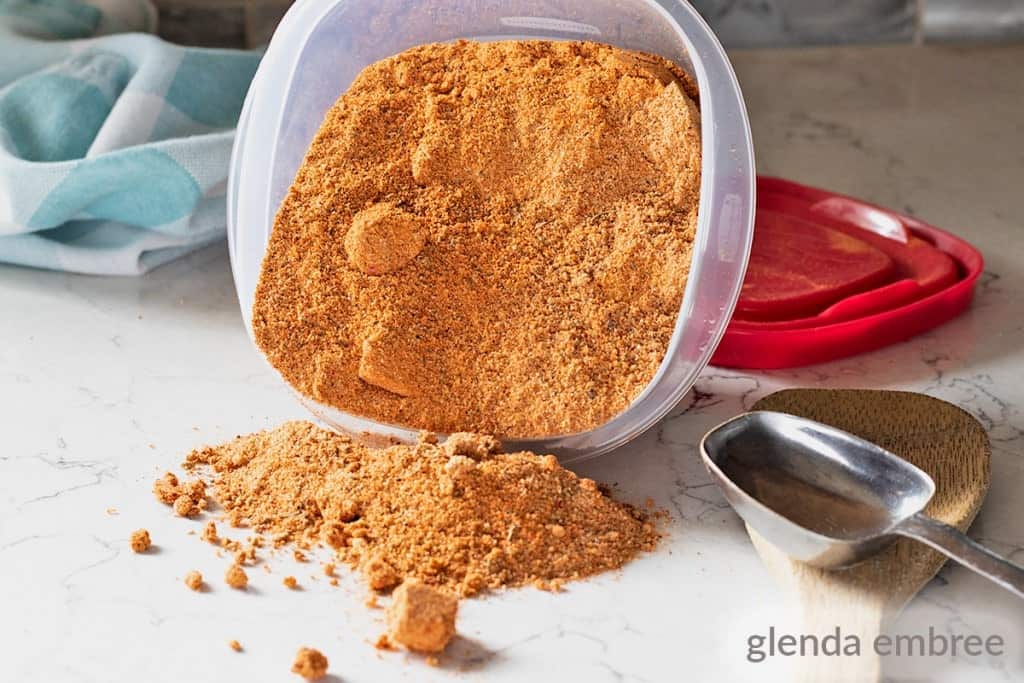
Homemade Cajun Seasoning creates a flavor profile that takes everyday dishes to a whole new level. It’s a seasoning blend that is different from any other I have experienced. It’s does this crazy tap dance on your taste buds. And every time you think, “Oh yeah! I know what that is,” something happens and you’re experiencing another new layer of flavor. Maybe you’ve already had lots of experience with Cajun seasoning, but for me, it’s brand new. And friends, it’s brand new GOOD!
With the exception of Aleppo pepper, I am guessing all the ingredients are familiar pantry seasonings for you. Imagine taking all the flavor bases of a really good soup stock; onions, garlic, celery, salt and pepper. Then, complement those savory basics with fragrant herbs, the lingering smokiness of smoked paprika, the zing of dried mustard and a little kick from dried chili peppers. You guys! You need this seasoning in your life!
I hope you love it as much as I do. Because I could definitely see this becoming an everyday seasoning blend for me. Enjoy and be blessed! ~Glenda
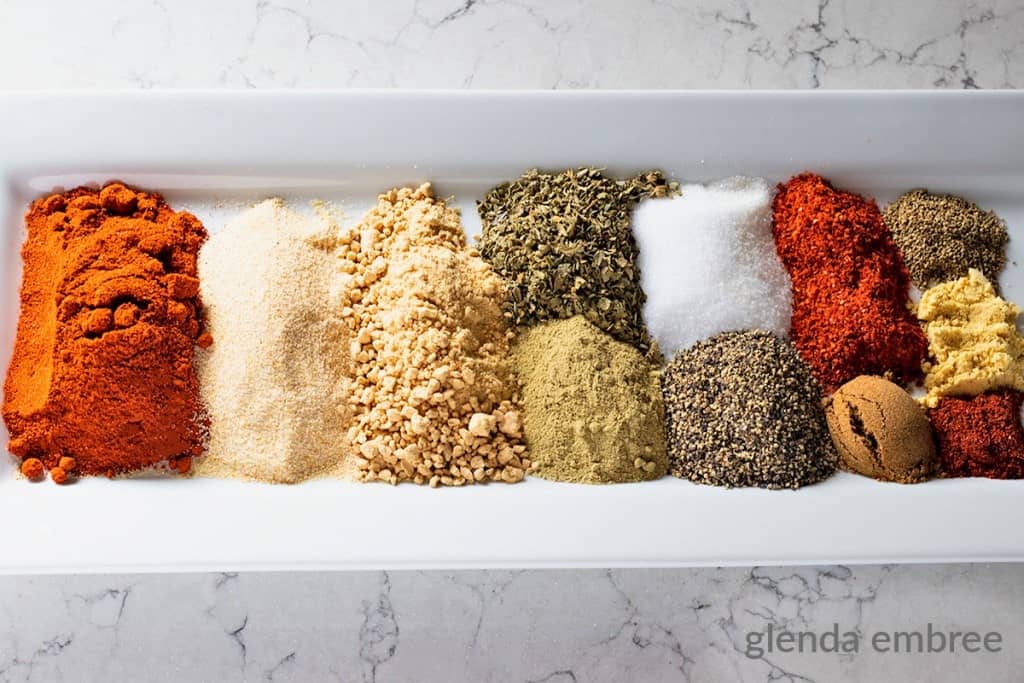
Making Substitutions in the Cajun Seasoning Recipe
My understanding is that there are many variations when it comes to Cajun Seasoning. So, if you buy yours ready made or switch up some of the ingredients in this recipe, your seasoning may be just as good, but very different.
However, if you want the same delicious flavor profile that I’m experiencing, follow the recipe exactly. The ratios and balance of ingredients can make a huge difference. Leaving something out can leave you with a “there’s something missing” experience”. And substituting the ingredients will definitely change the flavor.
In most recipes I would encourage you to change it up, use family favorites and make use of what’s already in your pantry. But, in the case of spice blends and seasonings, they really DO impact and define how your dish will taste. If you want to replicate the flavors in my recipes, the seasonings are a big part of that.
So, gosh yes! You do you. Use what’s right for your family and your pantry. I just want to be sure you’re happy and enjoying my recipes with as much flavor as they have to offer.
A Dried Chili Peppers Refresher
Heat levels in Homemade Cajun Seasoning range from mild to very spicy, too. It all depends on the dried chili peppers you choose. I would consider my seasoning to be moderate to medium. If you don’t change a thing about the recipe, I would confidently say it is just under medium. And it is scrumptious!
It’s been awhile since we’ve discussed substituting one pepper for another. Fresh or dried, you need to understand the heat level of the peppers a recipe calls for and the heat level of the ones you’re subbing in.
Those heat levels are wildly different in the dried chili pepper powders and flakes that are available. But, when you cook, you need to do a little research and have good information about the ingredients you’re using. Today, those ingredients are the dried chili peppers you’ll use to make Homemade Cajun Seasoning. And I’ll save you a little research time by sharing the information I have.
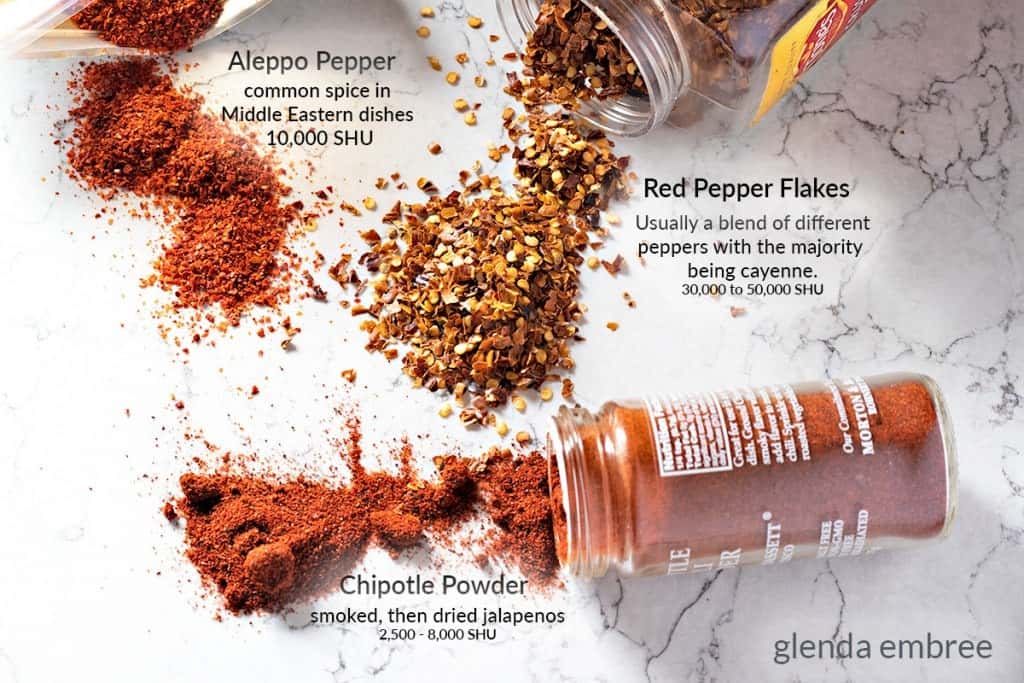
Knowing the heat ranges of the peppers will help you determine how to make substitutions, IF it’s absolutely necessary. To have a flavor profile that gives the same punch of flavor as my version, you’re going to want to do your best to use the ingredients I’ve used. I bought Aleppo Pepper online. If you live in a larger community, your market probably carries it. Everything else was readily available in our small town Walmart.
Understanding the Heat Level of Chili Peppers
The heat of peppers is registered on a scale known as the Scoville Scale. The Scoville Scale measures the heat level in SHU (Scoville Heat Units). Even then, it usually falls in a range, rather than a specific number. Where the peppers are grown and the weather there can affect where they fall within that heat range.
- Cayenne Pepper comes in HOT at 30,000 to 50,000 SHU.
- Aleppo Pepper comes in at 10,000 SHU.
- Chipotle Pepper comes in between 2,500 and 8,000 SHU.
- Chili Powder comes in between 500 and 1500 SHU.
When making substitutions for peppers, cooks often grab cayenne or chili powder thinking they can just swap them in for the peppers in a recipe. It’s natural. They’re familiar ingredients and usually in most kitchen pantries.
Looking at the chart above, though, you can see that there would be a vast difference between using 1 teaspoon of cayenne vs 1 teaspoon of chili powder, or Aleppo and chipotle powders. If the ingredient you will use is 5 times hotter than what is called for, you will want to adjust the amount you use to compensate for that.
If making hot pepper substitutions, look at the heat level of what you’re substituting for and find something with a similar heat profile or use a fraction of what the original recipe calls for. I encourage you to use common sense and caution to create a blend with the heat level that is right for your personal tastes.

Ways to Use Homemade Cajun Seasoning
- Sprinkle it on popcorn.
- Make any Cajun inspired recipe, like Gumbo, Dirty Rice or Jambalaya.
- Mix Cajun Seasoning with Greek yogurt as a veggie dip or for topping baked potatoes.
- Sub it into my Perfect Baked Chicken Breasts recipe, replacing the all purpose seasoning with Homemade Cajun Seasoning. DELISH!
- Use as a rub on any poultry and fish before grilling, frying, baking or roasting.
- Mix it into ground beef, pork, chicken or turkey to amp up the flavor in burgers, meatballs or my Easy Meatloaf Recipe.
- Mix it with cream cheese and crab meat to make a scrumptious crab dip to serve with crackers or toasted baguette slices.
- Use it to season oven fries.
- Add it to chicken or tuna salad.
- Mix it with your favorite ranch dressing and jazz up green salads with chicken.
- Make a dredge by mixing Homemade Cajun Seasoning into flour, dredging boneless skinless chicken and frying it up. That was our dinner last night. Superb!
- There must be dozens of others. Leave me a comment and let me know how you will use it!

The Recipe
Want to Save This Recipe?
Enter your email & I’ll send you the link so you always have it at your fingertips. Plus, I’ll send a collection of easy recipes to your inbox every Friday!
By submitting this form, you consent to receive emails from Glenda Embree.
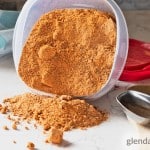
Homemade Cajun Seasoning
- Total Time: 5 minutes
- Yield: 3/4 cup (12 Tablespoons) 1x
Description
Scrumptious on fish, poultry, pork or beef. Fabulous seasoning for dips, sauces and gravies. A must-have pantry staple!
Ingredients
- 3 Tablespoons smoked paprika
- 2 Tablespoons garlic powder
- 2 Tablespoons onion powder
- 1 Tablespoon dried oregano
- 1 Tablespoon dried thyme
- 1 Tablespoon salt
- 1 Tablespoon black pepper
- 2 teaspoons Aleppo pepper powder (See note about substitutions)
- 1 teaspoon cumin
- 1/2 teaspoon celery seed
- 1/2 teaspoon dry mustard
- 1/2 teaspoon chipotle pepper powder (See note about substitutions)
Instructions
- You could leave your spices, as is, stir them together and store them to use. But, I prefer to grind them so the pieces are all the same size and everything is fully incorporated.
- To do that, put all the spices in the smoothie cup of your high speed blender (SEE NOTE). Pulse or blend at high speed until your spices are a fine powder and all have been evenly incorporated.
- Store in an airtight container in the pantry or cupboard. Spices keep their flavor best when stored in dark, dry and cool spaces.
Notes
It occurs to me that I use my high speed blender smoothie cups a lot when making things for you guys, like seasoning blends, salad dressings, etc. I have a *Ninja IQ Blender with Food Processor and Smoothie Blender cups. My exact set isn’t even sold any more. That’s how old they are. And they’re still great. But *this is Ninja’s current model close to what I have.
Note about Subbing Chili Pepper Powders: Peppers, have such widely variant levels of heat. Be careful you understand the heat-level of what you’re substituting before altering this recipe.
The heat of peppers is registered on a scale known as the Scoville Scale. The Scoville Scale measures the heat level in SHU (Scoville Heat Units). Even then, it usually falls in a range, rather than a specific number. Where the peppers are grown and the weather there can affect where they fall within that heat range.
- Cayenne Pepper comes in HOT at 30,000 to 50,000 SHU.
- Aleppo Pepper comes in at 10,000 SHU.
- Chipotle Pepper comes in between 2,500 and 8,000 SHU.
- Chili Powder comes in between 500 and 1500 SHU.
If making hot pepper substitutions, look at the heat level of what you’re substituting for and find something with a similar heat profile or use a fraction of what the original recipe calls for. Read more info about this in the original recipe post. I encourage you to use common sense and caution to create a blend with the heat level that is right for your personal tastes.
- Prep Time: 5 minutes
- Cook Time: 0 minutes
- Category: Seasoning Blend, Spice Blend
- Method: Blender
- Cuisine: American

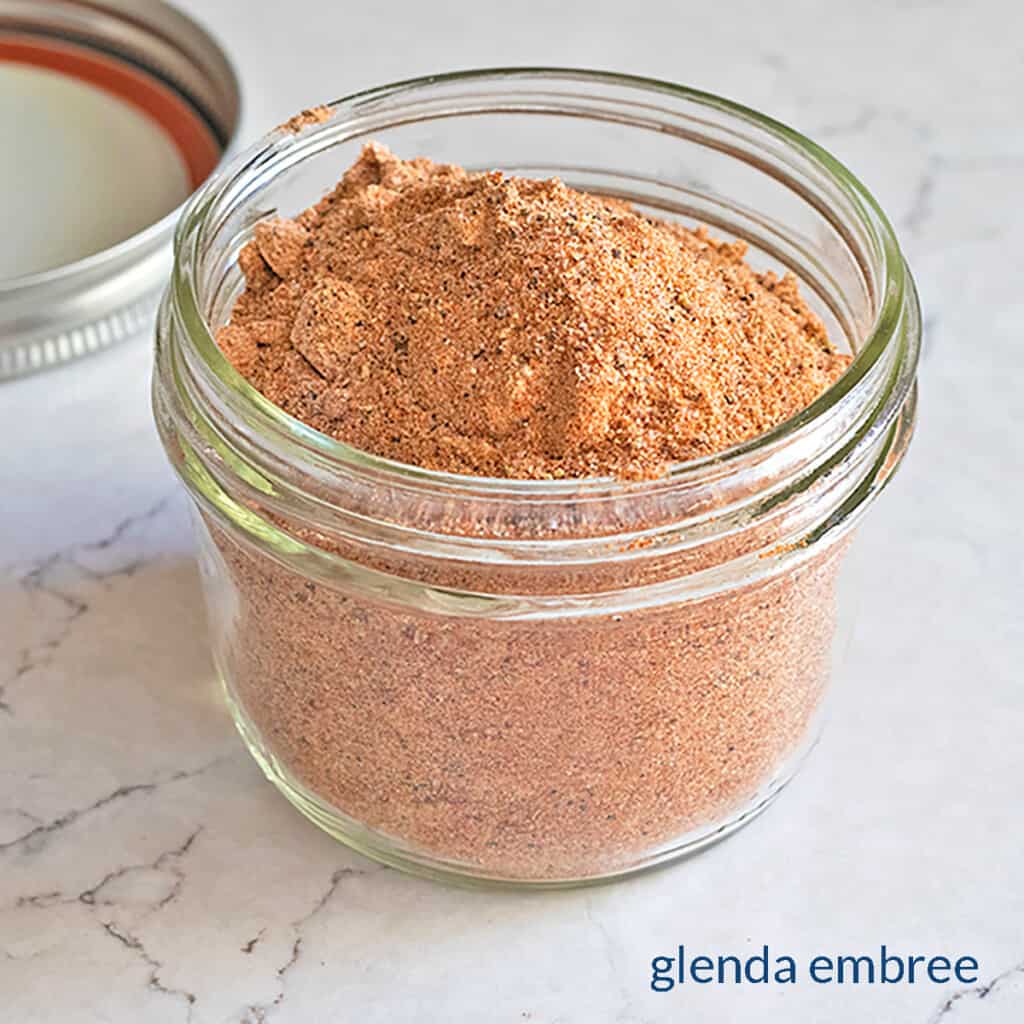

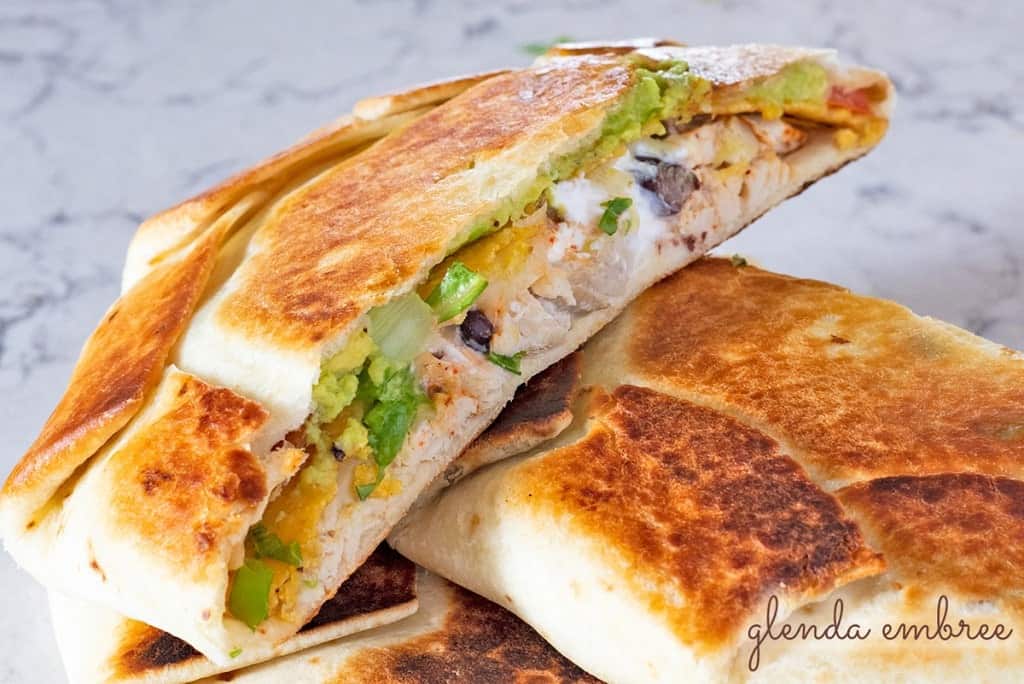
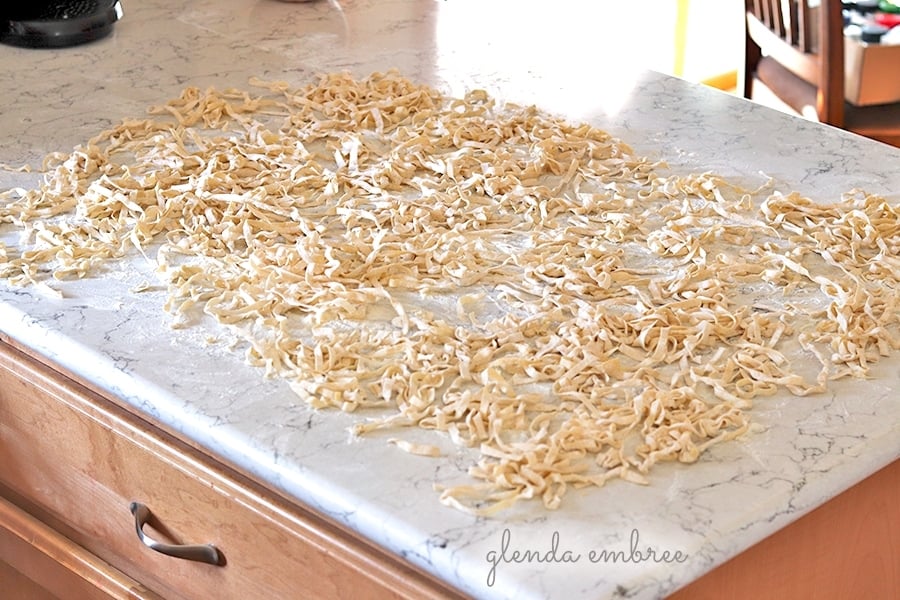
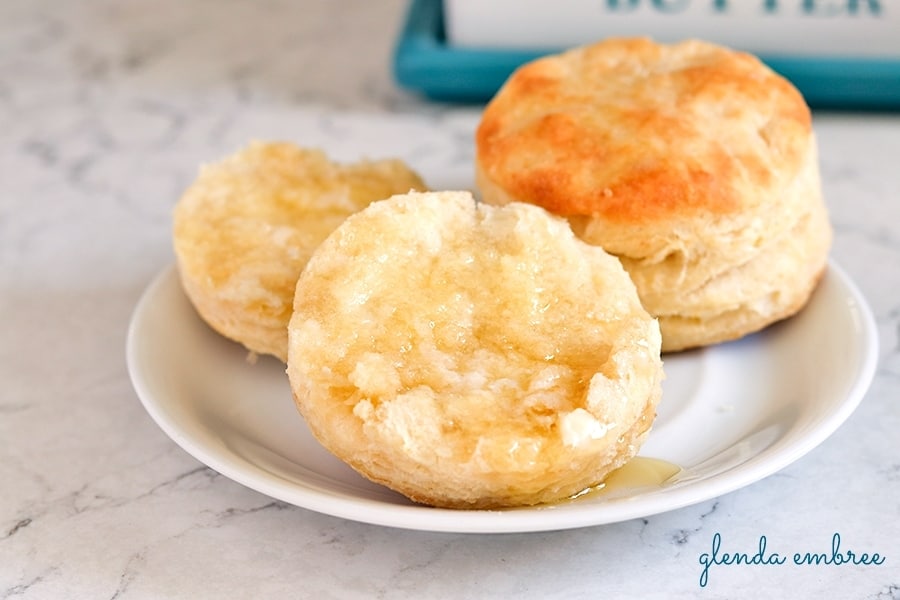
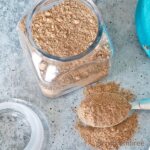
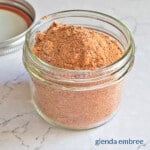
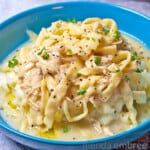






I was looking for a cajun seasoning recipe that I can adjust the salty – this was perfect!
I’m so happy to hear it, Paula! glad it is working out well for you.
Homemade is always the best! I’m going to give your mix a try.
Thanks, Natalie! I agree that homemade is best. I hope you enjoy the recipe!
Homemade cajun seasoning looks delicious.
Thank you, Swathi! I’m using it in more and more recipes. Such a great boost of flavor!
Oh I love making homemade seasonings like this! They taste so much better than the storebought!
Samantha, I agree 100%. Thanks for stopping by, today!
Thanks for the recipe! I am sure that I’m going to use this seasoning a lot!
You’re very welcome, Robin! I think you’ll find it’s an easy kick of flavor in lots of dishes.